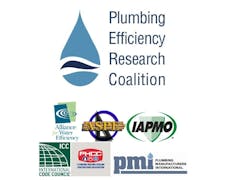The Plumbing Efficiency Research Coalition is set to begin its long-anticipated Drainline Transport in Buildings study. The effort is aimed at determining if decreasing levels of water flow––caused by increasingly efficient plumbing fixtures––are sufficient to clear debris from plumbing pipes.
Essentially, plumbing experts have expressed concerns that the industry has reached a tipping point in terms of the ability of low-flow fixtures to adequately transport waste through drain lines, particularly in larger commercial systems with long horizontal runs to the sewer. Soon, they worry, end-users and professionals will avoid using more efficient products.
That, combined with the fact that such problems have been reported with low-flow plumbing systems in Europe and Australia, has raised many questions.
“I look forward to the results of the Drainline Transport study,” says David C. Smith, PE, plumbing and fire protection department manager, Bala Consulting Engineers, King of Prussia, Pa. “Logic states that less water in the waste stream will not carry the waste as far in the drainage piping.”
By analyzing the drainage issue from a standpoint of slope, flush volume, toilet design, and whether periodic surges of water into a building drain can help, researchers hope to come away with a more informed understanding of the issue.
David E. DeBord, CPD, LEED BD+C, ARCSA-AP, a Chicago-based plumbing and fire protection engineer, wonders if ultimately the industry will need to reduce the size of piping to maintain the minimum velocities required to assure proper scouring, and whether a 1/8-inch minimum pitch per foot of piping is still sufficient in this new world of low-flow plumbing systems.
PERC’s coalition members include the International Association of Plumbing & Mechanical Officials (IAPMO), Alliance for Water Efficiency (AWE), the American Society of Plumbing Engineers (ASPE), the International Code Council (ICC), Plumbing-Heating-Cooling Contractors (PHCC), and Plumbing Manufacturers International (PMI). The group’s impending research is scheduled to be conducted at an American Standard testing facility. +
